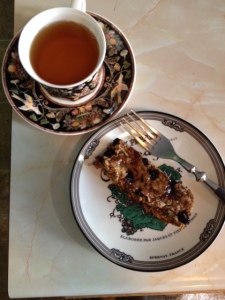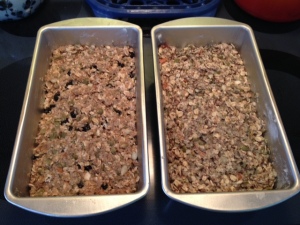When I was in Europe a few months ago, I fell in love with Copenhagen. I enjoy their healthy lifestyle of clean and natural food, athleticism, and camaraderie. Every day, droves of Danes gather in street side cafes under heaters and red blankets, even on the cold and dark evenings, laughing, nibbling and sipping for hours. While their lifestyle is similar to the one found here in Colorado, I think their way of life is happier, enjoyment focused, and less driven, which is something I aspire to.
So, as I tend to do, I began thinking often about the Danish and broader Scandinavian culture. A few dozen internet searches and sessions later, of following link after link; I stumbled on a fun blog. “My New Roots” is written by Sarah Britton, a nutritionist from Canada living in Denmark. While raising her family and writing her blog, she explores healthy alternatives to mainstream food choices. She first tried this bread at a friend’s home and since featured it on her blog.
As a lifelong food lover and home cook, losing my sense of smell as the result of another person’s carelessness, has been particularly heart breaking. After two years of being completely disgusted by food, I have slowly learned to appreciate other aspects of food, such as texture. Nothing will ever replace the complete experience of smelling, tasting, and savoring delicious food, but this bread goes a long way toward gratification. The bread is heavy, grainy, dark, moist and chewy just like traditional Scandinavian rye. It is filling and very satisfying. One slice for breakfast gives me energy for hours. The recipe is simple, versatile, and I have no doubt you will enjoy it. I suggest you double the recipe and make two loaves because it is going to go fast.
Use fresh, raw, organic ingredients whenever possible
1 cup freshly chopped, raw, sunflower seeds
1/2 cup freshly ground, raw, flax seeds
1/2 cup freshly chopped, raw nuts: almonds, hazels, walnuts-pick one or blend them
1 1/2 cups, gluten free rolled oats
1/4 cup psyllium husks
1/4 cup caraway seeds
2 tablespoons chia seeds
2 tablespoons hemp hearts
1 teaspoon sea salt
1 tablespoon maple syrup, raw sugar or stevia (I use maple)
3 tablespoons olive, coconut, canola, walnut, or Udo 3-6-9 oil blend (I use Udo oil)
1 1/2 cups filtered water
 Combine dry ingredients in a bowl or directly in the loaf pan. Whisk liquids together and add to dry ingredients. Mixture will be stiff. Transfer the mixture to loaf pan (if necessary) and smooth it out without pressing it down too much. Cover with a piece of waxed paper and let the loaf rest at room temperature for 4-8 hours to soften the nuts.
Combine dry ingredients in a bowl or directly in the loaf pan. Whisk liquids together and add to dry ingredients. Mixture will be stiff. Transfer the mixture to loaf pan (if necessary) and smooth it out without pressing it down too much. Cover with a piece of waxed paper and let the loaf rest at room temperature for 4-8 hours to soften the nuts.
Preheat oven to 350’F and grease your loaf pan with coconut oil.
Bake for 25 minutes. Remove from pan and place on a baking sheet. Return to the oven for 30-40 minutes or until the loaf sound hollow when tapped. Over baking will dry the loaf out and make it tough. Cool the loaf on a rack and wrap it in waxed paper.
I find the loaf will maintain its moisture and texture if kept wrapped and refrigerated for five days.
 You can omit the caraway if you don’t enjoy this flavor.
You can omit the caraway if you don’t enjoy this flavor.
You may add garlic, rosemary, basil and oregano for a Mediterranean loaf.
You may also consider adding cinnamon, ginger, cardamom, nutmeg, allspice and dried fruit for a breakfast loaf.


![th[8]](https://frenchwinegirltravels.files.wordpress.com/2012/10/th8.jpg?w=900)
![th[10]](https://frenchwinegirltravels.files.wordpress.com/2012/10/th10.jpg?w=900)


You must be logged in to post a comment.